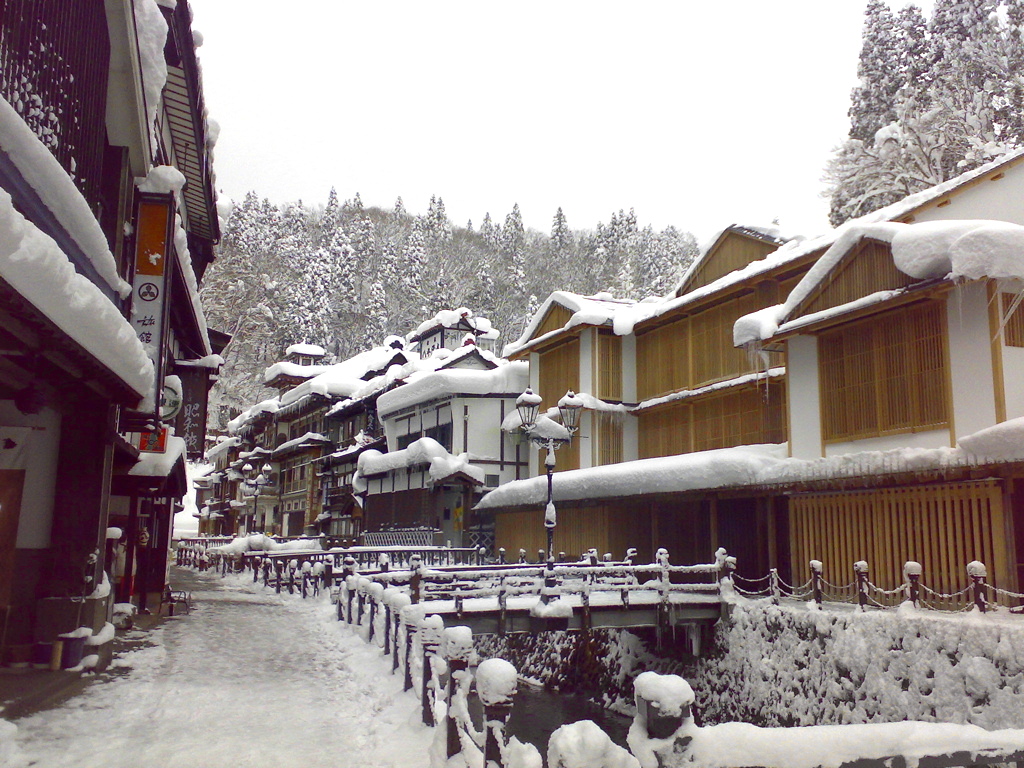Ginzan Onsen on:
[Wikipedia]
[Google]
[Amazon]
 Ginzan Onsen (銀山温泉) is an
Ginzan Onsen (銀山温泉) is an
Ginzan-Hot spring Association
Hot springs of Yamagata Prefecture Landforms of Yamagata Prefecture Tourist attractions in Yamagata Prefecture Obanazawa, Yamagata {{Yamagata-geo-stub
 Ginzan Onsen (銀山温泉) is an
Ginzan Onsen (銀山温泉) is an onsen
In Japan, are the country's hot springs and the bathing facilities and traditional inns around them. As a volcanically active country, Japan has many onsens scattered throughout all of its major islands. There are approximately 25,000 hot ...
(hot spring) area in Obanazawa, Yamagata Prefecture
is a prefecture of Japan located in the Tōhoku region of Honshu. Yamagata Prefecture has a population of 1,079,950 (1 June 2019) and has a geographic area of 9,325 km² (3,600 sq mi). Yamagata Prefecture borders Akita Prefecture to the north, ...
, Japan
Japan ( ja, 日本, or , and formally , ''Nihonkoku'') is an island country in East Asia. It is situated in the northwest Pacific Ocean, and is bordered on the west by the Sea of Japan, while extending from the Sea of Okhotsk in the north ...
. Its name means "silver mine hot spring". Ginzan Onsen's economy took off thanks to its booming silver production and eventually transitioned over to tourism when it opened up dozens of hot spring resorts along the central river that runs through the town. The mountains that surround this town yield rich hot spring water that is used both in the private hotels and public baths in the city center.
Ginzan Onsen became nationally famous as it was featured in the popular television drama ''Oshin
is a Japanese serialized morning television drama (''asadora''), which originally aired on NHK from 4 April 1983 to 31 March 1984; it is the 31st ''asadora'' overall to be produced. The 297 15-minute episodes follow the life of during the Mei ...
''. Each year this onsen village sees hundreds of thousands of domestic Japanese visitors.
Internationally, this town saw a sharp rise in foreign tourism thanks to the famous snow-covered sights in the winter. It has since been featured on international travel sites and agencies across the world. CNN has even suggested that this onsen town may be "Japan's most charming winter village".
Fossils from the Miocene
The Miocene ( ) is the first geological epoch of the Neogene Period and extends from about (Ma). The Miocene was named by Scottish geologist Charles Lyell; the name comes from the Greek words (', "less") and (', "new") and means "less recen ...
era have been found in the vicinity.
Access to this town requires riding a bus or taking a short taxi ride.
Lodging at Ginzan Onsen can be difficult due to the limited availability of rooms in this small town. Guests are advised to make reservations one year in advance if they wish to stay here during the months of January or February.
References
External links
*Ginzan-Hot spring Association
Hot springs of Yamagata Prefecture Landforms of Yamagata Prefecture Tourist attractions in Yamagata Prefecture Obanazawa, Yamagata {{Yamagata-geo-stub